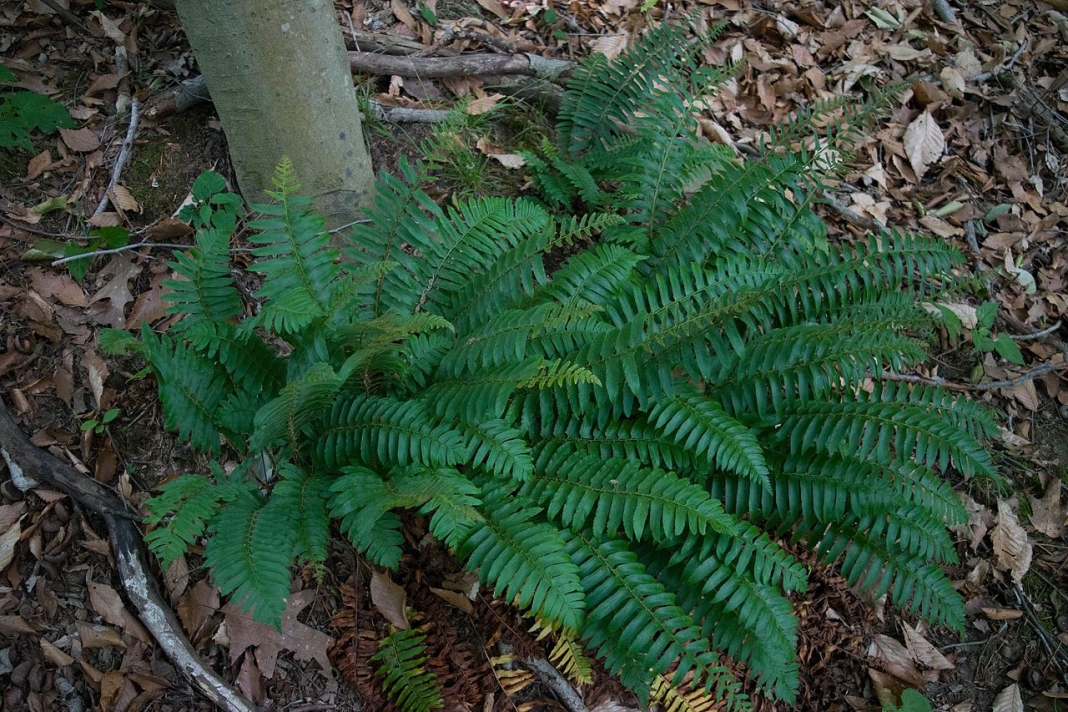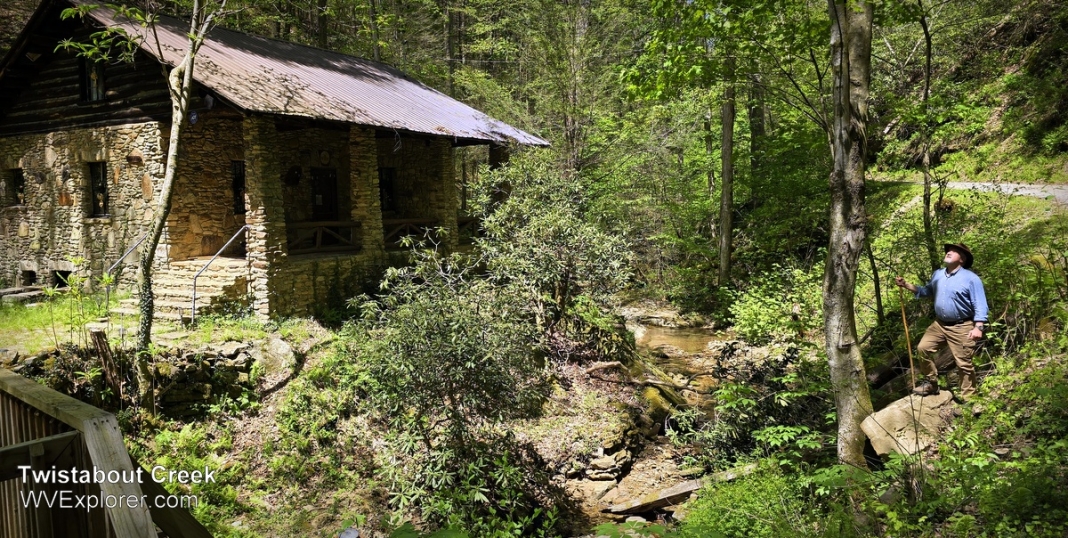RENICK, W.Va. — Ferns may be among the most overlooked plants in the West Virginia woodlands, though more than 50 species thrive in its mountains, according to native plant expert Barry Glick.
"I can’t claim to be an expert in fern identification, and that’s not because they’re complicated, it’s just that I haven’t had the time to really study them to the depths that I’d like to," Glick says.
Yet, he knows more than he lets on and has provided information on eight ferns that fans of the Mountain State's forests will want to look out for.
Christmas Fern
The most ubiquitous fern that people encounter on woodland walks is Polystichum acrostichoides, or The “Christmas Fern,” he says.
"Why do folks call it the Christmas Fern? Two reasons, and they both involve the pinnae, or leaf blades, on the frond. If you hold them horizontally, they resemble Santa Claus standing up on the back of his sled. If you hold them vertically, they resemble a Christmas stocking."
Glick says his favorite fern genus in Osmunda—named for Osmunder, the Saxon equivalent of the god Thor. There are three species of Osmunda in the genus.
Interrupted Fern
"Osmunda claytoniana, or the 'Interrupted Fern,' is quite fascinating," he says.
"The sterile fronds—those that are not spore-bearing—grow for a while and then pause to produce spore-bearing fertile pinnae then resume growing in the sterile mode."
Osmunda claytoniana is found in a wide variety of habitats throughout the state.

Royal Fern
Osmunda regalis or the “Royal Fern” can be easily identified as it produces fertile spores at the tip of its fronds, he says.
"Osmunda regalis is found in moist and swampy locations throughout the state. Osmunda regalis reproduces quite quickly via rhizome (underground stems) and by spore."
Cinnamon Fern

Another well known species is Osmunda cinnamomea, known as the “Cinnamon Fern,” which produces its spores on separate leaf blades arising from the center of the plant.
"They’re a woolly cinnamon brown color and resemble cinnamon sticks," Glick says.
According to the Native American Ethnobotany Database, cinnamon fern has been historically used by first nations tribes as a food source. The Iroquois and Cherokee used the fern for a variety of medicinal purposes—as a cold remedy, gynecological aid, venereal aid, and as a remedy to snake bites.
Grape Fern
Similarly, Botrychium are known as “Grape Ferns” because of the attractive shape of their spore clusters which resemble bunches of grapes. "They can be found in well-drained soil in the woods and partially shaded meadows. These ferns are more difficult to transplant than most other ferns due to their dependency on soil fungi that help feed them," he said.
Walking Fern
Another curiosity in the Fern World is Camptosorus rhizophyllus, also known as the “Walking Fern.”
"This distinctive little fellow has leathery four- to 12-inch long leaves that taper to a point," Glick says.
"It reproduces not only by spores but also by forming new plantlets at the tips of its fronds that root themselves as the tip comes in contact with the soil. As each new plant becomes established, the process continues and, after a few years, the newest baby is quite a ways from its mamma.

Hay-scented Fern
Dennstaedtia punctilobula is commonly called the “Hay-scented Fern,” and with good reason.
"If you crush the frond, it gives off a fragrance of newly mowed grass." It can be found in large colonies in the full sun of open meadows and in shady woods.
Sitobolium punctilobulum can exhibit varying degrees of phototropism, and its growth can vary in response to changes in light stimulus
Climbing Fern

Lygodium palmatum, or the “Climbing Fern,” is another curiosity among ferns. "It grows in acid woods in only five of the 55 counties in West Virginia," Glick says. Its winding fronds can grow to more than three feet long.
Its range is essentially Appalachian and is on endangered or threatened species lists in several states. It requires constant moisture, high light levels, and highly acidic soil to thrive.
"The reproductive life cycle of ferns is quite intriguing," Glick says. Spores are found in various locations on the different species, usually on the undersides of the fronds. When the time is right, and these spores are mature, they’re released.
They land in the soil and under favorable conditions (i.e. moisture, light, and temperature) develop into a prothallus, a leaf-like structure smaller than a dime. In this structure, microscopic sexual organs are formed, and fertilization occurs. Soon afterward, a root develops and, shortly thereafter, a recognizable plant.
This process can be reproduced in the kitchen, and you may just end up with thousands of new fern babies. Even if you don’t want to reproduce ferns, it’s fun to take a frond and lay it on a white sheet of paper in a warm location. In 24 hours, the sori (the scientific name for the capsules that enclose the spores) will open and release the spores onto the paper in a beautiful outline of the frond.
Some ferns also reproduce by sending out rhizomes (underground stems) that pop up a foot or so from the main plant with a new plant attached. The “Royal Fern” forms a nice little colony this way very quickly.
"Ferns fill a void in the garden. They can add an attractive texture creating a dramatic statement as a single specimen or as a colony in the wild or natural shade garden. They require little attention other than an occasional feeding and cleanup of the previous growing season’s fronds, depending on how tidy you keep your garden."
Glick says many fern field identification guides are available for purchase online.
Barry Glick's mountaintop garden and nursery attract gardeners from every country in the world. He writes and lectures extensively about native plants and hellebores and welcomes visitors with advance notice. He can be reached at barry@sunfarm.com, Sunfarm.com, or 304-497-2208.
Sign up to receive a FREE copy of West Virginia Explorer Magazine in your email weekly. Sign me up!




